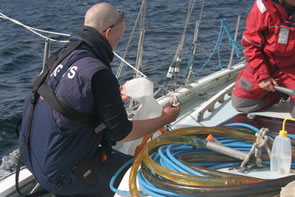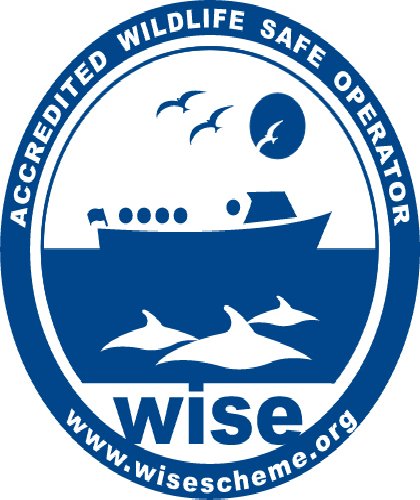Research Index



Research on Silurian
From April to October each summer, Silurian works around the Hebrides, monitoring cetaceans and other marine wildlife.
What are we researching?
Onboard, our team of scientists and volunteers are conducting visual and acoustic surveys to find out more about the distribution, abundance, movements and behaviour of whales, dolphins, porpoises, and other fauna such as basking sharks, seals and seabirds. We also investigate high-use habitats – areas that are particularly favourable for certain species, and anthropogenic impacts – and the effects of human activity on the region’s cetaceans.
Why?
Until recently, remarkably little was known about the whales, dolphins and porpoises found in Hebridean waters. Baseline data on their distribution, movements, habitats, and any threats they face are essential. Only with these data can we monitor any changes that are occurring, and protect these populations in the future by enabling appropriate conservation and management decisions to be taken.
How?
Onboard Silurian, our crew and volunteers conduct visual and acoustic line transect surveys for cetaceans and other marine wildlife. Visual surveys are carried out by scanning the sea with the naked eye and binoculars. Sightings and other environmental data are collected and stored using the real time data-logging program LOGGER (developed by International Fund for Animal Welfare (IFAW)), which saves directly into a Microsoft Access database. Photographic images are taken of the species we encounter to enable photo-identification.
All cetaceans make sounds under water, to navigate, orientate and find food. It is possible to identify many individual species by the characteristics of the sounds they make. With the use of underwater microphones, called hydrophones, either towed behind a boat or attached to the seabed, we can conduct acoustic surveys to find out more about cetacean activity, even when animals are underwater, or the weather is too poor for visual surveys.
On Silurian acoustic surveys are carried out by towing a 100m long stereo hydrophone that is designed to detect cetaceans which make higher frequency sounds – dolphins and harbour porpoises. PAMGUARD software processes and visually represents the high frequency echolocation sounds made by harbour porpoises, so they can be detected in real time. We are also able to record the whistles and clicks of dolphin species encountered.
Other ecological indicators such as seabird activity and sea surface temperature are also monitored. Anthropogenic impacts which may affect cetacean activity are also recorded. These include boat activity, location of static fishing gear, marine litter and underwater noise. As sound and hearing are essential to cetaceans for finding food and navigating, noise has significant potential impact. We use our hydrophone to monitor and record the sounds made by Acoustic Deterrent Devices (ADDs), also known as seal scarers, which are placed on many fish farms to deter seals, but may also affect cetaceans. We are also able to record military sonar when it is in use in our survey area.
The scientific surveys are licensed by Scottish Natural Heritage and accredited by WiSe (our skipper and first mate are WiSe trained). Our crew work with a team of six volunteers, who come from all walks of life and all ages. Volunteers participate in surveys as visual observers and data recorders on 7 and 10 day trips, and receive scientific, survey and sailing training. Find out about volunteering on Silurian here.





